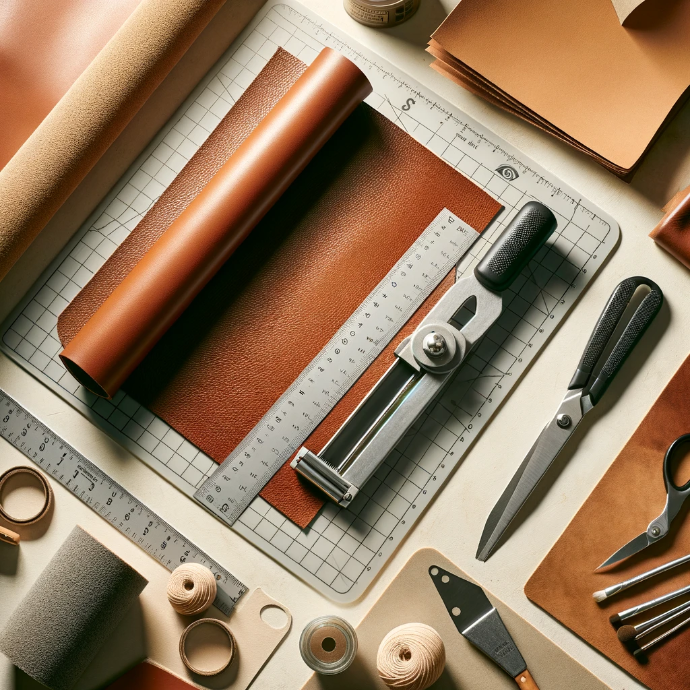Guide: Cutting Leather
Cutting leather is a fundamental skill for anyone involved in leatherworking. Whether you're a medieval reenactor looking to craft your own gear or just a fan of handmade leather products, the following guide will help you cut leather accurately and safely.
Materials and Tools::
- Leather: Choose the appropriate leather for your project. The thickness and texture can vary depending on the application.
- Sharp cutting tool: A rotary cutter, a scalpel, or a specialized leather cutting blade are best suited for the task.
- Cutting mat: A self-healing cutting mat protects your work surface and the blade.
- Ruler or cutting guide: A metal ruler or a specialized cutting guide helps you make straight cuts.
- Chalk or leather marking pen: For temporary markings on the leather.

Steps:
- Preparing the Workspace
- Ensure a clean, stable, and well-lit work surface.
- Lay out the cutting mat to protect your tabletop and the blade.
- Selecting and Preparing Leather:
- Choose a piece of leather large enough for your project. Check for any flaws or irregularities in the leather.
- Smooth out the leather by gently stretching or rolling it to remove any wrinkles or creases.
- Marking the Cut:
- Use chalk or a leather marking pen to draw the cutting line on the leather. Be precise and measure twice to avoid mistakes."
- For straight cuts, use a ruler or a cutting guide to draw the line straight.
- Cutting the Leather:
- Secure the cutting tool firmly and keep the blade straight. An ergonomic handle can improve control and prevent fatigue.
- Place the cutting tool at one end of the marking and press the blade firmly but controlled through the leather. For thicker leather or difficult cuts, it may be necessary to cut over the same line multiple times."
- Hold the ruler or cutting guide firmly to prevent slipping while cutting.
- Finishing Touches:
- Check the cut for cleanliness and precision. If necessary, you can refine the edges with fine sandpaper or a leather edge tool.
- Treat the edges with an edge finish or wax to seal and smooth them.
Tips:
- Regularly sharpen your tools: A sharp blade is crucial for precise and clean cuts.
- Practice on leftover pieces: Before working on your actual project, practice on smaller leather scraps to get a feel for the pressure and technique.
- Safety first: Achte stets auf deine Finger und arbeite langsam und kontrolliert, um Verletzungen zu vermeiden.
With some practice, you'll soon be able to cut leather accurately and safely for all kinds of projects.